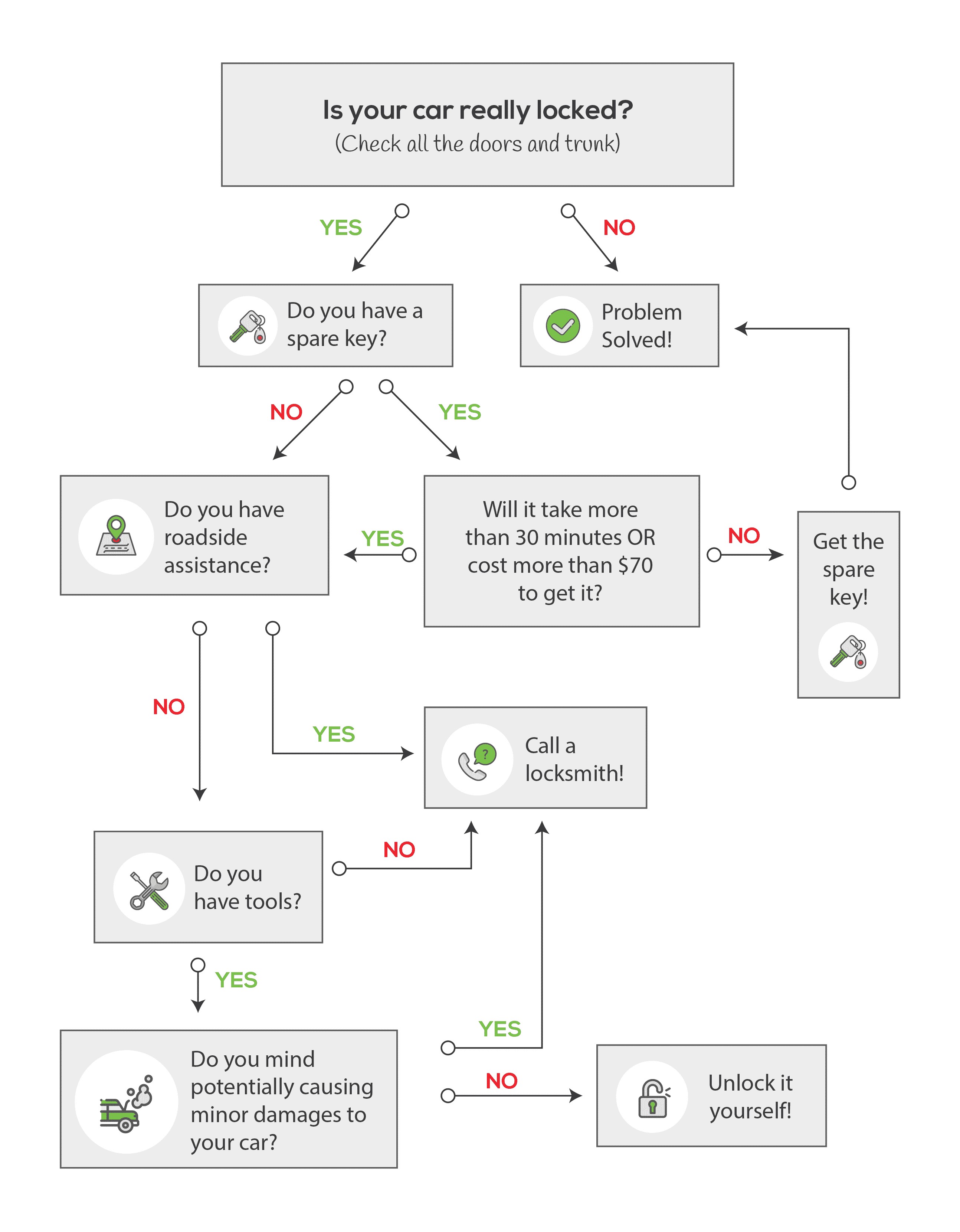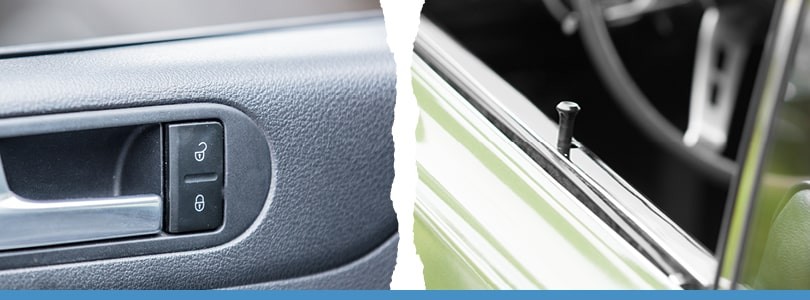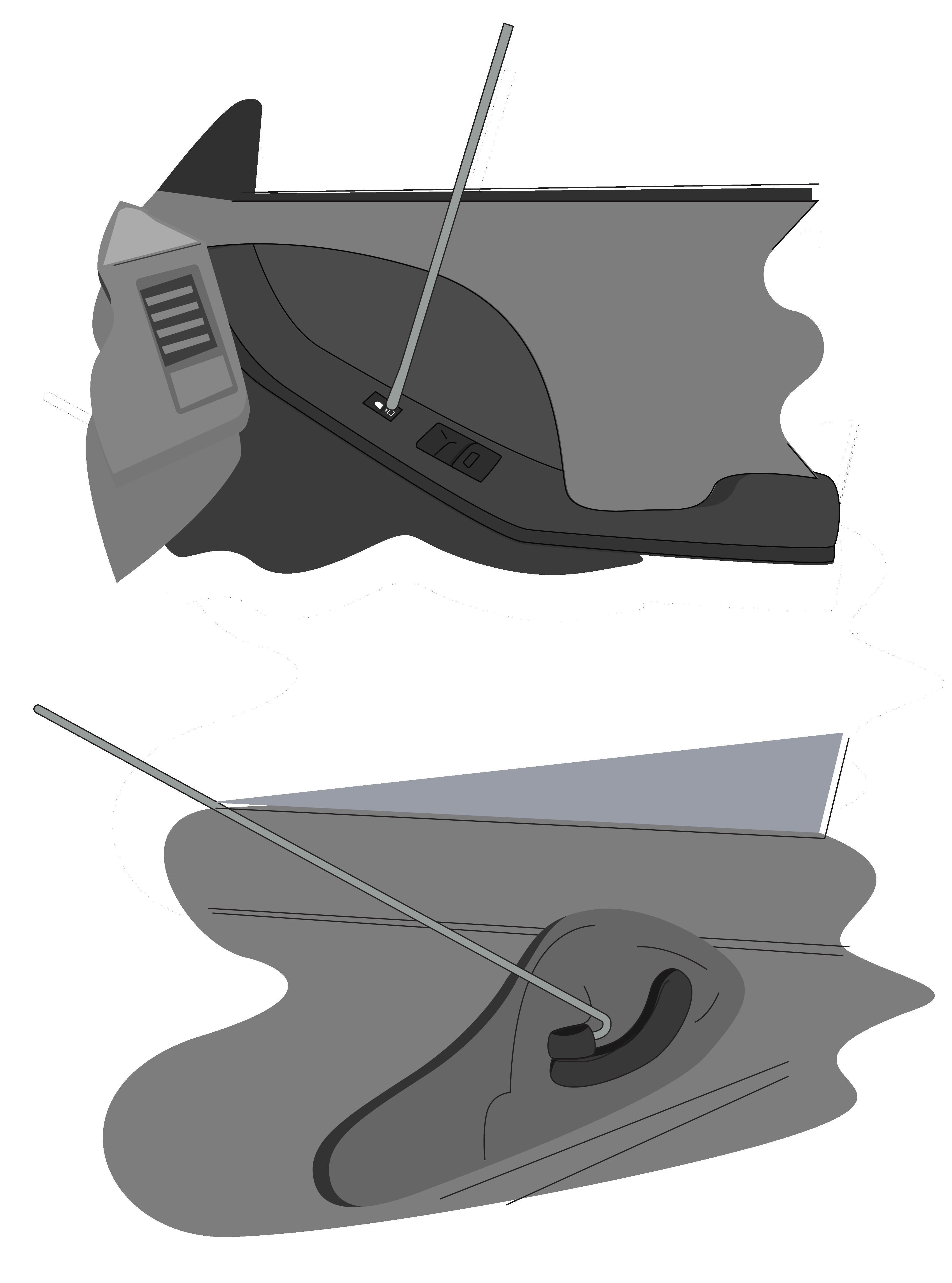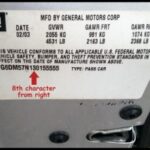Getting locked out of your car can truly disrupt your day, but don’t worry, CARS.EDU.VN is here to help. Unlocking your car doesn’t always require calling a locksmith right away; there are several methods you can try first. Explore options for car entry, key retrieval, and alternative solutions for vehicle access, ensuring you’re well-informed about car lockout assistance and vehicle security.
1. Are You Really Locked Out of Your Car?
It sounds straightforward, but double-checking can save you time and stress. Make a full circle around your car, pulling on each door handle, including the trunk. Sometimes, a door might not be fully closed, or you might have inadvertently unlocked the trunk without realizing it. Overlooking this simple step happens more often than you might think. Don’t assume – verify!
2. Spare Key Location and Accessibility
Your spare key is your best friend in a lockout situation. The challenge is its location and how quickly you can access it.
2.1. Retrieving Your Spare Key: Considerations
- Distance: How far away is your spare key? Is it at home, work, or with a trusted friend or family member?
- Time: How quickly can you retrieve the spare key? Is it faster to get the spare or try another method?
- Convenience: Do you have someone who can bring the key to you, or will you need to arrange transportation?
If time is critical or the spare key is too far away, consider alternative solutions like roadside assistance or attempting to unlock the car yourself.
2.2. The Value of Key Duplication
Consider creating additional spare keys and entrusting them to reliable contacts, such as family members, partners, or close friends. Distributing spare keys ensures access in different locations, minimizing the impact of a lockout. For enhanced security, think about investing in a smart key fob, offering both convenience and peace of mind.
Having a spare key readily available can save time, money, and stress during a car lockout.
3. Roadside Assistance: Tapping Into Hidden Resources
Before you start trying to jimmy the lock or call a locksmith, check if you have roadside assistance coverage. Many people are unaware they already have this benefit through various sources.
3.1. Insurance Policies
Comprehensive car insurance policies often include roadside assistance as a standard or add-on feature. Contact your insurance company’s emergency line to confirm your coverage. They may dispatch a locksmith directly or reimburse you for the cost.
3.2. AAA Membership
AAA (American Automobile Association) is a popular option for roadside assistance. Membership includes services like lockout assistance, towing, jump-starts, and fuel delivery.
3.3. Credit Card Benefits
Some credit cards offer roadside assistance as a perk to cardholders. Check the terms and conditions of your credit cards to see if this benefit is included.
3.4. New Car Warranties
New car warranties often include roadside assistance for a specific period. Refer to your warranty documentation for details on coverage and eligibility.
3.5. Automaker Programs
Many automakers offer their own roadside assistance programs for new car owners. These programs typically cover a range of services, including lockout assistance.
4. Locksmith vs. DIY: Weighing Your Options
Deciding whether to call a locksmith or try to unlock your car yourself requires careful consideration of several factors.
4.1. Tool Availability
Unlocking a car without the key typically requires specialized tools, such as:
- Wedge: To create a small gap between the door and the frame.
- Reach Tool: To manipulate the unlock button or door handle from inside the car.
If you don’t have these tools, you’ll need to improvise, which may increase the risk of damage.
4.2. Risk of Damage
Professional locksmiths use tools designed specifically for unlocking cars without causing damage. Improvised tools and techniques can scratch the paint, damage the weather stripping, bend the door frame, or even damage the locking mechanism.
4.3. Cost Comparison
Locksmith fees for unlocking a car can range from $50 to $150, depending on factors like your location, the time of day, and the complexity of the car’s locking system. DIY methods may seem cheaper initially, but the cost of potential damage can quickly exceed the price of a locksmith.
4.4. Skill Level
If you’re unfamiliar with car unlocking techniques, the DIY approach can be challenging and frustrating. Locksmiths have the experience and expertise to unlock cars quickly and efficiently, minimizing the risk of damage.
4.5. Safety Considerations
In certain situations, such as when a child or pet is locked in the car on a hot day, time is of the essence. Calling a locksmith ensures a faster and safer resolution compared to attempting a DIY method.
Table: Locksmith vs. DIY – A Quick Comparison
| Factor | Locksmith | DIY |
|---|---|---|
| Tools | Specialized, damage-free | Improvised, potential for damage |
| Risk of Damage | Low | High |
| Cost | $50 – $150 | Potentially lower initially, but can increase with damage |
| Skill Level | Professional, experienced | Requires knowledge and dexterity |
| Safety | Faster, safer in emergencies | Slower, riskier in emergencies |
| Time | Usually quick and efficient | Can take longer, especially if unsuccessful |
| Convenience | Can come to your location 24/7 | Requires gathering tools and attempting to unlock the car |
| Expertise | Trained to handle various car models and locking systems | May not be familiar with specific car models or locking systems |
| Peace of Mind | Knowing the job is done correctly and safely | Uncertainty about potential damage or success |
| Warranty/Guarantee | May offer warranty or guarantee on services | No guarantee of success or damage-free outcome |



CARS.EDU.VN always recommends weighing the pros and cons carefully before deciding whether to call a locksmith or attempt to unlock your car yourself. Consider your skills, the value of your time, and the potential for damage before making a decision.
5. Calling a Locksmith: Securing the Best Possible Price
If you decide to call a locksmith, taking a few extra steps can help you secure the best possible price.
5.1. Comparison Shop
Don’t settle for the first locksmith you find. Call at least five different locksmiths in your area and ask for a detailed quote, including service call fees and labor costs.
5.2. Exact Total Price
Insist on an exact total price over the phone. Avoid locksmiths who say they need to see the car first or can only provide an estimate on-site. A reputable locksmith should be able to give you a firm price based on your car’s make and model.
5.3. Transparency and Clarification
Be wary of locksmiths who offer suspiciously low prices. These may be bait-and-switch tactics, where the locksmith inflates the price once they arrive. Always clarify all potential charges upfront, including:
- Service call fee
- Labor cost
- Any additional fees for unlocking your specific car model
- Taxes
5.4. Credentials and Reputation
Before hiring a locksmith, verify their credentials and reputation. Check for:
- License: Ensure the locksmith is licensed to operate in your state.
- Insurance: Verify the locksmith has liability insurance to cover any potential damage to your car.
- Reviews: Read online reviews and testimonials to gauge the locksmith’s reputation and customer service.
5.5. Negotiating Tips
Once you have a few quotes, don’t hesitate to negotiate. Let each locksmith know that you’re comparing prices and ask if they can offer a better deal. You may be surprised at how much you can save.
6. Breaking a Window: A Last Resort Option
Breaking a window should only be considered as a last resort in a true emergency. The risks and costs associated with this option are significant.
6.1. Cost Considerations
Replacing a car window is generally more expensive than hiring a locksmith. The cost can vary depending on the type of glass, the car model, and whether you need to replace any additional components, such as sensors or heating elements.
6.2. Safety Hazards
Breaking a car window can be dangerous, as the glass can shatter into sharp pieces that can cause cuts and injuries. Wear safety glasses and gloves to protect yourself.
6.3. Emergency Situations
Breaking a window may be justified in life-threatening situations, such as when a child or pet is locked in a car on a hot day. In such cases, call emergency services immediately, and they can advise you on the safest course of action.
6.4. Choosing the Right Window
If you must break a window, choose one that is farthest away from the person inside the car. Side windows are generally easier to break than the windshield, which is made of laminated glass.
6.5. Tools and Techniques
Use a tool like a hammer, a screwdriver, or a rock to break the window. Aim for the corner of the glass, as this is the weakest point. Strike firmly and deliberately, being careful to avoid injury.
CARS.EDU.VN advises that If breaking the window is the only option, proceed with extreme caution and prioritize safety.
7. Outdated Techniques: Slim Jims and Tennis Balls
While you might have heard of these methods, they are generally ineffective and can even damage your car.
7.1. Slim Jims
Slim jims are long, thin metal tools that were once used to unlock car doors by manipulating the locking mechanism. However, modern cars have more complex locking systems and electronic wiring, making slim jims ineffective and potentially damaging.
7.2. Tennis Balls
The tennis ball method involves creating a hole in a tennis ball and pressing it against the car’s keyhole while applying pressure. The idea is that the air pressure will force the locking mechanism to open. However, this method is largely a myth and rarely works on modern cars.
7.3. Why These Methods Don’t Work
- Advanced Locking Systems: Modern cars have sophisticated electronic locking systems that are not easily manipulated by simple tools.
- Electronic Wiring: Using a slim jim can damage the car’s electronic wiring, leading to costly repairs.
- Air Pressure Limitations: The air pressure generated by a tennis ball is typically insufficient to unlock a car door.
Relying on outdated techniques can waste your time and potentially damage your car. Stick to proven methods or call a professional locksmith.
Avoid using outdated techniques like slim jims and tennis balls, as they are ineffective and can damage your car.
8. Step-by-Step Guide: Unlocking Your Car Safely
If you’re determined to try unlocking your car yourself, follow these steps carefully to minimize the risk of damage.
8.1. Identify the Unlock Mechanism
Determine whether your car has an electronic unlock button or a manual lock. Electronic buttons are usually located on the driver’s side door panel, while manual locks are on each door.
8.2. Gather Your Tools
You’ll need a wedge to create space between the door and the frame, and a reach tool to manipulate the unlock button or door handle.
- Wedge Alternatives:
- Rubber or plastic door stoppers
- Inflatable airbag wedge (available at auto supply stores)
- Flathead screwdriver (use with caution to avoid damage)
- Reach Tool Alternatives:
- Wire coat hanger
- Long, thin rod or stick
- Specialized car opening tool (available online or at auto supply stores)
8.3. Wedge the Door Open
Insert the wedge at the top of the door, as far from the hinges as possible. Gently create a small gap, just enough to insert the reach tool. Be careful not to force the wedge too far, as this can bend the door or damage the locking mechanism.
8.4. Manipulate the Unlock Mechanism
Insert the reach tool into the gap and carefully maneuver it to push the electronic unlock button or pull the manual lock. Take your time and be patient, as it may take several attempts.
8.5. Open the Door
Once you’ve unlocked the door, remove the reach tool and the wedge. Open the door carefully, avoiding any sudden movements that could damage the locking mechanism.
9. Detailed Breakdown of the Four-Step Unlocking Process
This section provides a more in-depth explanation of each step, with additional tips and considerations.
9.1. Step 1: Identifying the Unlock Button Location
- Electronic Unlock Button: Typically found on the driver’s side door panel, often with a symbol of a key or an open padlock. Pressing this button usually unlocks all doors simultaneously.
- Manual Unlock Button: Located on each door, usually near the handle. Unlocking one of these buttons only unlocks that specific door.
Determine which type of unlock button your car has and which one will be easier to reach with your tools.
9.2. Step 2: Creating Space Between Door and Frame
- Positioning the Wedge: Insert the wedge at the top corner of the door, as far away from the hinges as possible. This area provides the most leverage and reduces the risk of bending the door.
- Using an Inflatable Airbag Wedge: These wedges are inserted into the door gap and inflated to create space. They are less likely to damage the door than solid wedges.
- Controlling the Gap Size: Only create enough space to insert the reach tool comfortably. Over-widening the gap can damage the door or locking mechanism.
9.3. Step 3: Using a Tool to Push the Unlock Button
- Wire Coat Hanger Technique: Straighten a wire coat hanger and bend the end into a hook shape. Insert the hanger into the gap and maneuver it to push the electronic unlock button or pull the manual lock.
- Long Reach Tool Technique: These tools are specifically designed for unlocking cars. They have a long, slender design with various attachments for manipulating different types of locks and buttons.
- Aiming for the FOB: If your car has a FOB and it’s visible inside the car, try to aim for the unlock button on the FOB.
9.4. Step 4: Safely Removing Tools and Opening the Door
- Releasing Pressure on the Locking Mechanism: Before opening the door, remove the reach tool and the wedge. This releases pressure on the locking mechanism and prevents damage.
- Opening the Door Carefully: Open the door slowly and deliberately, avoiding any sudden movements that could strain the locking mechanism.
Congratulations! You’ve successfully unlocked your car. Now, consider getting a spare key made to avoid future lockouts.
10. Key Takeaways and Actions After Unlocking
Once you’ve successfully unlocked your car, take these steps to prevent future lockouts and ensure your vehicle’s security.
10.1. Key Duplication
Visit a locksmith or car dealership to have a spare key made. Store the spare key in a safe and accessible location, such as with a trusted friend or family member.
10.2. Key Finder Devices
Consider purchasing a key finder device that attaches to your keychain and allows you to locate your keys using a smartphone app.
10.3. Remote Key Fob Apps
Some car manufacturers offer smartphone apps that allow you to remotely lock and unlock your car, as well as start the engine and track the vehicle’s location.
10.4. Reviewing Car Insurance Coverage
Check your car insurance policy to ensure you have adequate coverage for roadside assistance and key replacement.
10.5. Maintaining Locking Mechanisms
Regularly lubricate your car’s locking mechanisms to prevent them from sticking or malfunctioning. Use a silicone-based lubricant specifically designed for automotive use.
By taking these precautions, you can minimize the risk of future lockouts and ensure the security of your vehicle.
CARS.EDU.VN is dedicated to providing you with the information and resources you need to keep your car running smoothly.
For further assistance, contact us:
- Address: 456 Auto Drive, Anytown, CA 90210, United States
- WhatsApp: +1 555-123-4567
- Website: CARS.EDU.VN
We are here to help you with all your automotive needs.
FAQ: Common Questions About Car Lockouts
Here are answers to some frequently asked questions about car lockouts:
- Q: How much does it cost to hire a locksmith to unlock a car?
- A: The cost can range from $50 to $150, depending on your location, the time of day, and the car’s locking system.
- Q: Is it safe to use a slim jim to unlock a car?
- A: No, slim jims can damage modern car’s electronic wiring and locking systems.
- Q: Can I unlock my car with a tennis ball?
- A: This method is largely a myth and rarely works on modern cars.
- Q: What should I do if my child or pet is locked in the car?
- A: Call emergency services immediately. This is a life-threatening situation.
- Q: Will my car insurance cover the cost of unlocking my car?
- A: Some comprehensive car insurance policies include roadside assistance, which may cover lockout services.
- Q: What tools do I need to unlock my car myself?
- A: You’ll need a wedge to create space between the door and the frame, and a reach tool to manipulate the unlock button or door handle.
- Q: How can I prevent future car lockouts?
- A: Make a spare key, use a key finder device, and consider a remote key FOB app.
- Q: Is it better to call a locksmith or break a window?
- A: Calling a locksmith is generally safer and less expensive than breaking a window, unless it’s a life-threatening emergency.
- Q: How do I find a reputable locksmith?
- A: Check for licenses, insurance, and online reviews before hiring a locksmith.
- Q: What if I locked my keys in the trunk?
- A: The methods are similar, but accessing the trunk release mechanism might require additional steps depending on the car model. Some cars have a release button inside the glove compartment or near the driver’s seat.
Reach Out to CARS.EDU.VN for Expert Car Care and Information
Experiencing a car lockout can be frustrating, but you don’t have to face it alone. CARS.EDU.VN provides a wealth of expert information and resources to help you navigate car ownership with confidence. From detailed guides on maintenance and repair to reviews of the latest car models, we’re your trusted source for all things automotive.
Are you struggling to find reliable car repair services or unsure about the best maintenance schedule for your vehicle? Do you need help comparing different car models or understanding the latest automotive technologies? CARS.EDU.VN is here to assist you.
Visit CARS.EDU.VN today to explore our extensive collection of articles, guides, and resources. Let us help you make informed decisions about your car and keep it running smoothly for years to come.
For personalized assistance and expert advice, contact us:
- Address: 456 Auto Drive, Anytown, CA 90210, United States
- WhatsApp: +1 555-123-4567
- Website: CARS.EDU.VN
Let CARS.EDU.VN be your partner in automotive care and knowledge.
cars.edu.vn provides expert car care and information to help you navigate car ownership with confidence.
